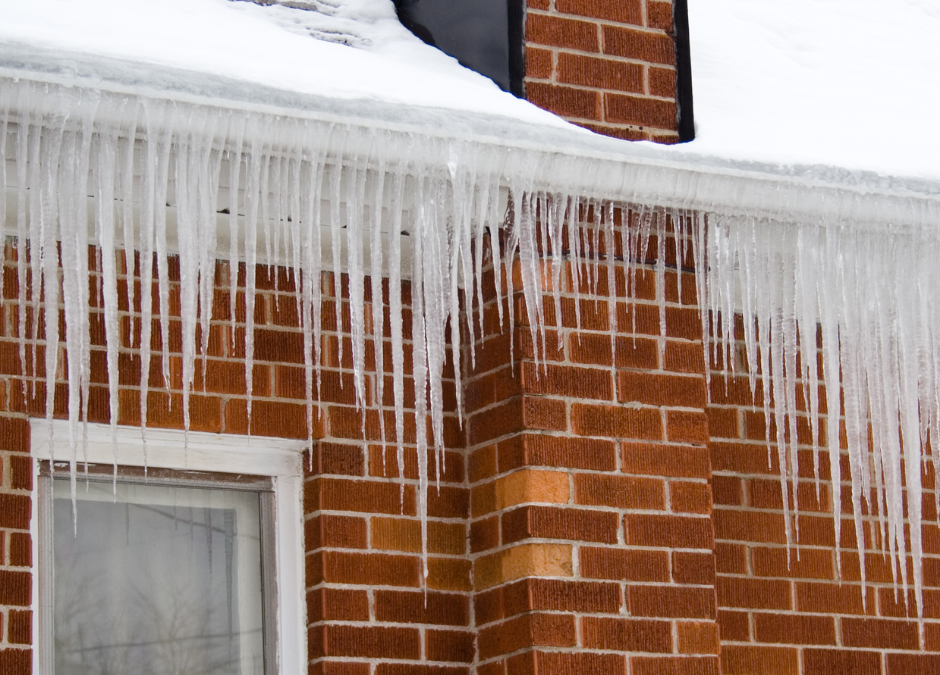Winter in Louisville, Kentucky, brings a picturesque landscape but also challenges for homeowners. One significant concern during the colder months is the potential for ice damming, which can wreak havoc on your gutters and, consequently, your home. In this blog post, Cardinal Gutters, your trusted gutter company in Louisville, will guide you through the best practices for winter gutter care and how to avoid the menace of ice damming. Our expert tips will not only help you protect your gutters but also safeguard your home from the potential damages caused by ice dams.
Understanding Ice Damming: Before delving into the preventive measures, it’s crucial to comprehend what ice damming is and why it poses a threat to your home. Ice dams are ridges of ice that form at the edge of your roof, preventing melting snow from properly draining off. As this water backs up, it can seep into your home, causing damage to your ceilings, walls, insulation, and, importantly, your gutters. This makes winter gutter care paramount in colder climates like Louisville.
- Proactive Gutter Cleaning: The first line of defense against ice damming is ensuring your gutters are free of debris. Cardinal Gutters recommends a thorough cleaning in late fall to remove leaves, twigs, and any accumulated dirt. Clean gutters ensure that melting snow and ice can flow freely, reducing the risk of ice dams forming.
- Installing Gutter Guards: Consider investing in gutter guards to prevent debris from entering your gutters in the first place. These guards act as a barrier, allowing water to flow through while keeping leaves and other debris out. Cardinal Gutters offers a range of high-quality gutter guard options that suit various gutter types and provide year-round protection.
- Ensuring Proper Insulation: Ice dams often form when there’s a warm attic space causing snow on the roof to melt and then refreeze at the colder eaves. Adequate attic insulation helps maintain a consistent temperature, minimizing the risk of ice dams. Cardinal Gutters recommends inspecting and upgrading your insulation as needed.
- Ventilating the Attic: Good attic ventilation is essential for regulating temperature and preventing ice dams. Cardinal Gutters advises ensuring that your attic has proper vents to allow for continuous airflow, helping to keep the roof surface cool and discourage ice dam formation.
- Prompt Snow Removal: After heavy snowfall, consider removing some of the snow from your roof using a roof rake. Cardinal Gutters suggests exercising caution and recommends consulting with professionals if you’re not comfortable performing this task. Removing excess snow reduces the load on your gutters and minimizes the chances of ice dams forming.
- Professional Gutter Inspection: Schedule a winter gutter inspection with Cardinal Gutters. Our team of experts will assess the condition of your gutters, checking for any pre-existing damage or areas of concern. Early detection and repairs can prevent potential issues from escalating during the winter months.
- Gutter Heating Systems: For homes in particularly cold climates, consider installing a gutter heating system. These systems, available through Cardinal Gutters, prevent ice buildup by melting snow and promoting smooth water flow. While it’s an investment, it can be a highly effective solution for preventing ice dams.
Conclusion: Winter gutter care in Louisville, Kentucky, is not just about protecting your gutters; it’s about safeguarding your entire home from the potential damages caused by ice damming. By following these best practices recommended by Cardinal Gutters, you can fortify your home against the winter chill. From proactive gutter cleaning and the installation of guards to ensuring proper insulation and ventilation, these measures collectively contribute to a winter-ready home. Remember, a small investment in winter gutter care today can save you from significant repair costs tomorrow. Trust Cardinal Gutters for all your winter gutter care needs, and let’s ensure your home stays warm and dry throughout the winter months.

